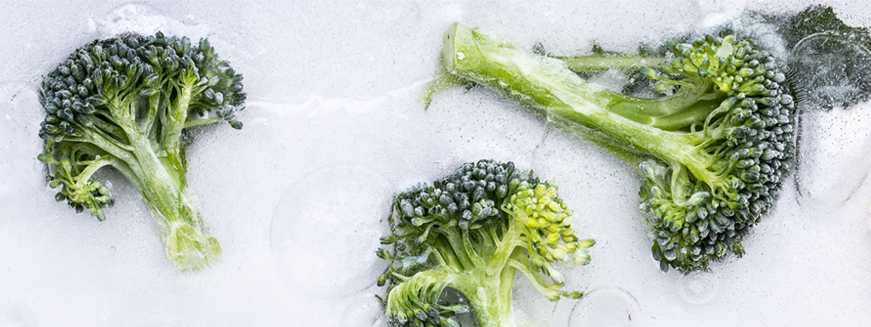The Fresh Blog
Lifestyle, Health, Nutrition & Inspiration from Luvo
Frozen Friends with Benefits
There’s some confusion out there about frozen foods. People swear they’re not as nutritious or tasty as the fresh stuff. In reality, most of the time frozen options are just as good, if not better. The key is knowing the right circumstances and methods to take your food to the cold side. You have to do a bit of research to debunk the myths—or read this article.Freezing and chilling food has been around for a long time. Early hunters and fishers stored their catches outdoors in the winter months to make them last. These days freezing is the preferred storage method for those of us who like to eat fruit on our pancakes and vegetables all the time, all year-round—especially stuff that can’t be found fresh locally. It’s simply a great way to enjoy your favorite options, especially if you’ve picked a big bushel of something.
What to freeze and how to do it
There is no hard and fast rule about what to freeze, but this previous post highlights some outstanding options. My favorites include broccoli, cauliflower, asparagus and bell peppers, each of which makes a perfect veggie side dish when reheated. To freeze vegetables, you might want to blanch them first for a couple minutes. My preferred fruits to freeze are blackberries, blueberries and strawberries. For best results, chop the foods into bite-sized pieces, wash and pat them dry, spread them on a cookie sheet and put them in the freezer. When they’re solid, bag them before popping them back in the freezer.
What happens to nutrients
Many of the fruits or vegetables in your grocery store have traveled some distance to get to the shelves near you. To arrive in a suitable condition, they are usually harvested in an under-ripe state, with less than optimal nutritional content. And they don’t get any better over time sitting on store shelves. By contrast, foods destined for freezing are usually picked at peak ripeness and vitamin density, then quickly frozen, resulting in a preservation of nutrients.
A recent study in the Journal of Agricultural and Food Chemistry investigated four vitamins—ascorbic acid (vitamin C), riboflavin, alpha-tocopherol (vitamin E) and beta-carotene—in frozen and fresh food samples. The conclusion was that the vitamin content of the frozen samples was comparable to and in some cases higher than that of the fresh counterparts. An exception was beta-carotene, which decreased significantly in the frozen versions of some of the foods.
Check out this video to learn more about how freezing can preserve nutrients.
What to make
Of course the best way to benefit from frozen friends is by making tasty blended drinks like smoothies or shakes. You can choose what goes in them, customize the flavor to suit your palette, and tailor your mix of vitamins and minerals. Frozen foods are easy to pop in the blender in any quantity, and make for a refreshing beverage any time of day—or year.
What are your favorite frozen friends? Got any tips for the perfect smoothie? Spill your secrets in the comments and on Twitter at @luvoinc.


